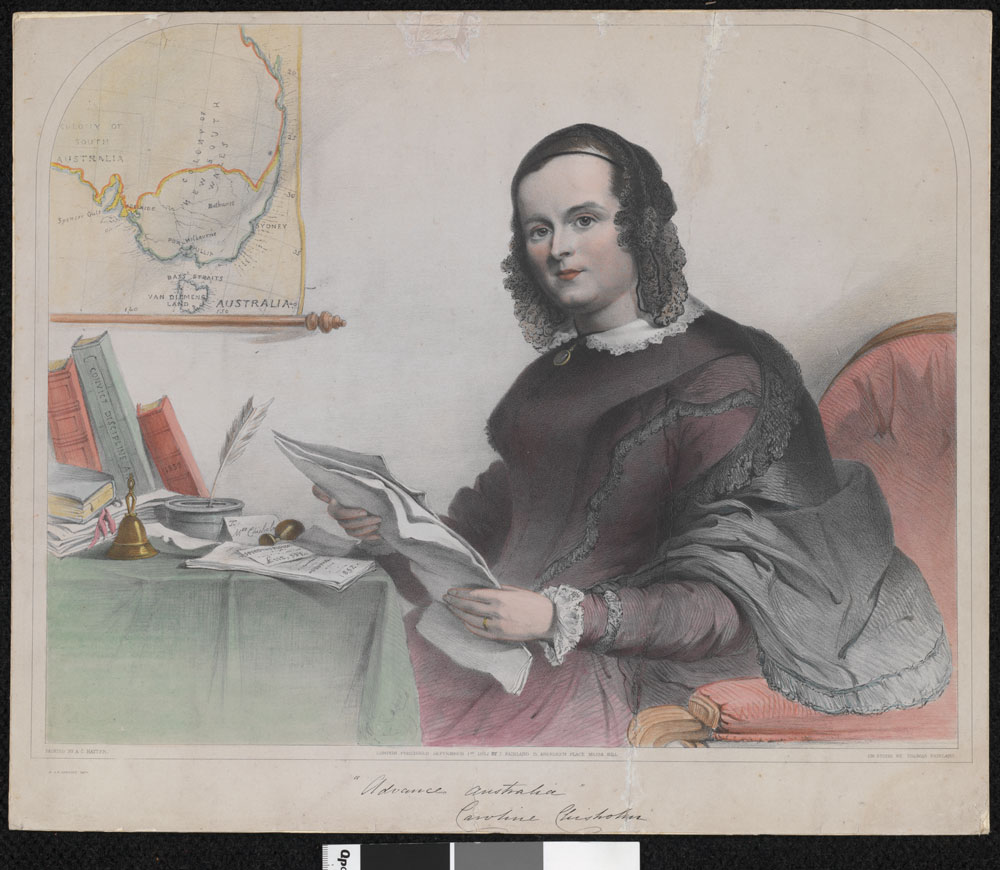About Caroline Chisholm
Caroline Chisholm was a pioneering humanitarian who fought to improve conditions for immigrant women and families. After discovering the NSW Government had no system to support new immigrants, Caroline met every incoming ship to offer help with employment and accommodation. The cottage on Mill Street is one of two terraced dwellings that Caroline converted into an immigrant hostel. Known as Caroline Chisholm Cottage, it is believed to be the nation’s only surviving site of her charitable works. In honour of her tireless contribution, her face was featured on our first five-dollar note.
Location
Accessibility
Category
Share and save

From England to India
Caroline Chisholm was born Caroline Jones in Northampton, England, in 1808. In 1833, aged 22, she married army officer Captain Archibald Chisholm, and accompanied him to Madras, India. She soon showed interest in improving the lives and prospects of young women, opening a school for the daughters of British soldiers there.
Settling in NSW
In 1838, Captain Chisholm’s regiment granted him 2 years’ sick leave. Deciding that Australia’s climate would boost the Captain’s health, the couple sailed for Sydney and settled in Windsor, New South Wales.
Caroline soon became aware of the difficult conditions facing the colony’s immigrants. The government had no system to support newcomers, so she began to help people find homes and jobs. Caroline became a familiar figure on the wharves meeting every immigrant ship. She took a special interest in helping young women who arrived alone, often with nowhere to go.
Creating homes and opportunities
In 1841, Caroline approached Governor Gipps with a plan for a dedicated facility for women and was given part-use of Hyde Park Barracks in Sydney. Funded by donations, the Female Immigrants’ Home provided a safe haven for up to 100 women at a time. It also operated as a free employment agency.
Caroline encouraged immigrants to move inland where more jobs were available on farms and in rural communities. Soon, she had set up employment agencies and hostels in a dozen rural areas, including East Maitland in the Hunter Valley. Again, she became a familiar sight leading wagonloads of immigrants out to these areas on her horse, Captain.
In March 1842, Caroline rented two dwellings that she converted into a hostel for immigrants in East Maitland.
Advocacy for immigrants
She continued campaigning fiercely upon returning to England in 1846, lobbying to improve conditions on immigrant ships and establishing a society offering financial assistance to families to move abroad.
By the early 1850s, Caroline was widely known across England and Australia and the subject of many articles, poems and portraits. She returned to Australia in 1854, this time focused on helping to improve living conditions for prospectors during the Victorian gold rush.
In 1866, Caroline left Australia for the final time. She died in London on 25 March 1877. In a true reflection of the values Caroline stood for, her gravestone in Billing Road Cemetery, Northampton, is inscribed ‘The Emigrants’ Friend’.
